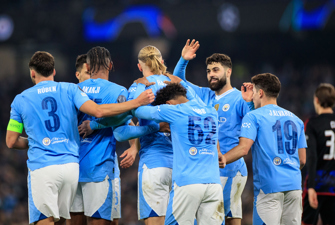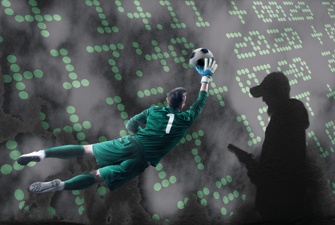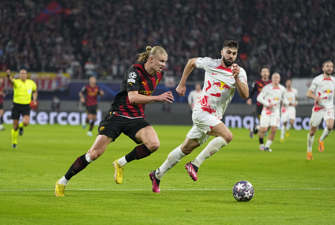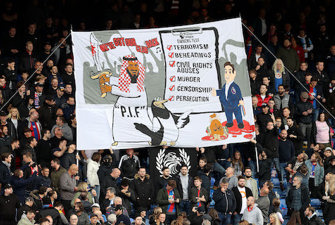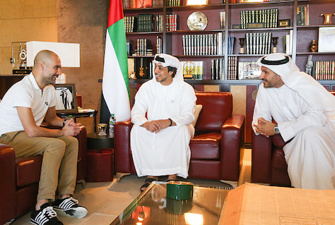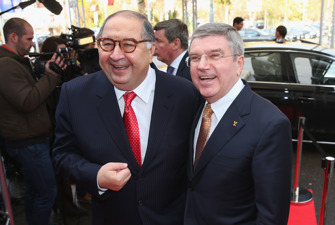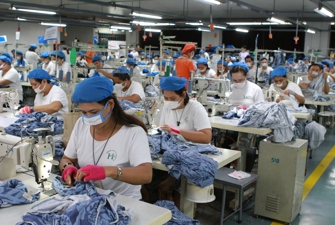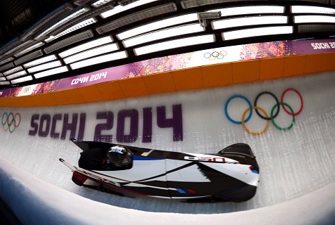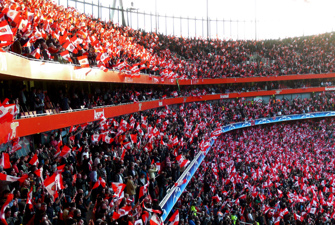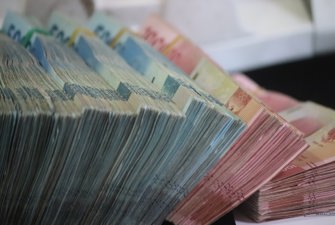The Evolving European Model of Professional Sports Finance
In 1995 the European Court of Justice ruled in the Bosman case that the player transfer system and restrictions on the maximum number of foreign players on teams were illegal violations of the Treaty of Rome.
Prior to this decision players were not free to move from one team to another, because transfers could occur only if two clubs agreed on a transfer fee to the club losing the player. This limitation on mobility kept player salaries low. Also changed in Bosman was the 3 + 2 rule, a quota system allowing only three foreign players on a team in a national league, plus two other foreigners if they played for five years without a break in the host country.
This decision has caused dramatic changes in the European sports business, particularly football (soccer), ice hockey, basketball, and rugby. Bosman is akin to the 1975 arbitration ruling in the United States, that allowed free agency for baseball players who played with their clubs for one year without a contract, and which was later extended to American football, basketball, and hockey.
While revision in the European system of sports finance was underway before the Bosman decision, the elimination of restrictions on the player labor market has accelerated the change. The purpose of this article is to examine the evolution of finance models in European professional sports. This will involve describing and comparing four paradigms: (1) European amateur sports, (2) European professional sports, traditional, (3) European professional sports, contemporary, and (4) the American model. Our objective is not only to convey understanding of this evolution but to anticipate its future development.
Amateur sports model
Modification of club finances has been least radical at the amateur level in Europe. An amateur club's financial receipts reflect its basic aim of gathering members who are interested in the practice of sport. The club\'s purpose is for recreation and development of young players. Economic viability is sustained largely through subscriptions and private cash donations, as illustrated historically for clubs A and B in France in 1976-77 (see Table 1).
Depending on the level of sporting events in which it is involved, an amateur club may also derive revenue from gate receipts. This share could become extensive if the club's first team participates at the highest level of competition, like the rugby club C in Table 1. With as much as two-thirds of revenue from gate receipts, a few amateur clubs have a financial structure that is close to that of a professional club. Funds also come to the typical amateur club from concession stands at games, parking, fairs, dances, and sale of club merchandise. For those amateur clubs at high competitive levels income may also derive from advertising and sponsorship from outside businesses.
The financial structure of European amateur sports is little changed from a generation ago. For example, one can compare Table 1 with data for 1997-98 for all sports clubs in Switzerland. On average, the Swiss clubs show financing from subscriptions at 28 percent, donations 5 percent, gate receipts 5 percent, commercial revenues 16 percent, sponsoring 13 percent, and other sources (including subsidies) 33 percent. Moreover, in an amateur club, the major sources of finance (subscriptions, donations, subsidies, spectators) continue to be mostly derived from local sources.
Professional sports model: Traditional
Throughout most of the 20th century the primary source of revenue to European professional sports was gate receipts. In some countries (Germany, France, Italy) there were subsidies from national and local governments and industrial patrons such as Fiat, Bayer, Philips, and Peugeot. Advertising revenues became more important, and in the 1960s and 1970s corporate sponsorship increased significantly, as firms sought more direct identification in terms of audience, image, notoriety, and sales. Even in cases where a club received subsidies from local authorities, usually municipalities, there was corporate sponsorship (but not ownership), typically in situations where the companies were geographically located close to the club, e.g., Fiat and Juventus, both in Torino, Italy; Philips and PSV, both in Eindhoven, Holland; and Peugeot and FC Sochaux, both in Sochaux-Montbliard, France.
In the 1970s revenues from gate receipts of professional teams were far greater, absolutely and proportionately, than for amateur clubs. Also, professional clubs received less from advertising, patrons, and sponsorships. For instance, Table 2 shows that in Division 1 French football clubs in 1970-71, 81 percent of revenues were from spectators, and just one percent from sponsors and advertising. During 1966-68, football clubs like Saint-Etienne, Lille, and Paris received two-thirds to nine-tenths of their revenues from gate receipts (see Table 3). France was unique in that 18 percent of Division 1 football revenues came from municipal government subsidies. But similar to other countries, the lion's share of the gate receipts were from local or national French residents.
The above model of finance can thus be referred to as "Spectators-Subsidies-Sponsors-Local" or SSSL. It has existed for a long time in all European countries. In countries where public subsidies to professional clubs are forbidden, most of the difference is made up by private donations, subscriptions, and membership fees. This is illustrated by 1978 data from two British cricket clubs, in Kent and Sussex (see Table 4). Cricket was not profitable at this time because clubs were unable to attract enough spectators, and so had to depend on corporate sponsors (Schweppes, Benson & Hedges, Gillette) to finance major events.
Although television rights sales appeared in the financing of the British cricket clubs in 1978, and in French football in 1980-81, television was not an important source of funds to clubs. It simply did not fit into the strategies of professional leagues and clubs. In 1967, for instance, the British Football Premier League rejected a BBC proposal of a million pounds for live broadcast of championship matches. In France, the Stade Rennais football club refused a 50,000 franc proposal in 1965 for televising a single match. The leagues and clubs were fearful that live television broadcasting would decrease attendance at the stadium, thus shrinking their major source of revenue. Given the lack of competition among broadcasters -- there was only one public television station at the time -- the monopsony rights fee would not be sufficient to compensate for lost gate receipts.
Professional sports model: Contemporary
Most top-level European professional clubs no longer have the financial structure of the old SSSL model. During the 1980s and even more so in the 1990s, new sources of revenue emerged and old ones declined. For example, gate receipts in Division 1 French football fell from 81 percent in 1970-71 to 50 percent in 1985-86 and 19.9 percent in 1997-98 (see Table 2). In Italian Division 1 football a similar trend is evident, as spectators brought in 71 percent of revenue in 1988, but only 36 percent in 1998 (Table 5). An exception to the trend is Spanish football, which remains more dependent on spectators due to the important system of season ticket buyers ("socios") in that country.
In the contemporary professional model, subsidies have declined in countries where they are not already banned. The share of revenues from advertising and sponsorships has held steady for the past 15 years in the range of 20-25 percent in football. The advertising-sponsor share is somewhat higher in basketball, which more recently became a professional sport in Europe, and higher still in rugby, whose "professionalization" only dates back to 1994.
If the SSSL model has declined, what are the new sources of funds to professional sports? In 1997-98 television rights took the first rank in the finance of French professional football and the second rank in the finance of several big European clubs (see Tables 2 and 5). The relative importance of television is increasing in other sports as well. Television has become, or is destined to be, the main source of professional sports finance.
A media takeover is evidenced by the current strategy of firms in the broadcast industry, like BSkyB, CLT-UFA, AB Sports, Canal Plus, and Path (Bourg 1999), which consists of buying up shares in a professional club's stock. Involvement of the media is not entirely new. For instance, the French newspaper L'Equipe (and its ancestor L'Auto) has provided decisive financial support to European professional cycling and motor racing events (Bourg 1989). Also, public television channels have long been contributors to football revenues (RAI to the Italian Calcio, ARD-ZDF to the German Bundesliga, BBC to the British Premier League, and ORTF to the French National Football League). But their support has been a subsidiary source of funds compared to spectators, patrons, and sponsors.
A major reason explaining the rise of television and participation by media companies is increased competition in the industry. Whereas once there was one public television station, now there are many public and private channels to choose from (Andreff, Nys, Bourg 1987; Bourg, Gouguet 1998). Professional leagues and clubs can make use of this competition by negotiating more lavish television rights deals. This is a consequence of privatization and deregulation of the media industry in Europe, particularly television channels, and the phasing out of the monopsonistic position of a single public channel on the market for sports broadcasting in each European country.
Television is increasingly taking a bigger part in financing professional sports in Europe, and there is far more growth to come. This tendency is strengthened by the relatively unsaturated European market as well as by the internationalization of sport (Andreff 1989). The sports that are most conducive to television are those in which European or world events attract widespread interest.
Another interesting aspect of the revised model is the emergence of a new generation of entrepreneurs onto the scene. These corporate titans are no longer the unselfish, financially disinterested businessmen of the past, but investors bent on improving financial results of the clubs through ownership and control. There are numerous examples, a few of which are Jean-Luc Lagardre (Matra into Racing Paris), Silvio Berlusconi (Fininvest into Milano AC), Joe Lewis (ENIC into Glasgow Rangers), Mark McCormack (IMG into RC Strasbourg), and Rupert Murdoch (BSkyB's bid for Manchester United).
The penetration of entrepreneurs and corporations into the sports business has triggered two significant changes. One is that the club's administration is taken over by professional managers, usually but not always resulting in financial stability. The other change is that the club's finances benefit from the ability of these new investors to mobilize additional funds for further growth and competitive edge. The new owners are eager to establish vertical integration in the industry through promotion of sporting events, control of stadium facilities, ownership of television rights, merchandising, and facilitating other aspects of a corporate empire.
A synergism can develop as a result of the interaction between sport and business. Merchandising, for example, has long been a practice of clubs. But they lacked the resources for full-scale marketing. Specialists are now doing a better job of promoting a larger variety of team merchandise to greater numbers of people across broader geographic areas. Merchandising reached 10 percent of football club Milano AC's revenue in 1997, 13 percent of the Tottenham Hotspurs, 22 percent for Newcastle, and 34 percent for Manchester United. For the latter, in 1998, merchandising revenues provided as great a share as gate receipts. Merchandising is currently the main by-product of football clubs' operations, providing a whole catalog of items--apparel, linen, toys, schoolbags, watches, perfumes, and whatnot.
Another feature of the new model is a magnified distinction between clubs as demanders and suppliers of talent. Some clubs concentrate more on seeking to increase revenue and return on investment by issuing securities (stocks, bonds) on financial markets and borrowing funds from banks. Other clubs are more conservative in their finances, but seek to take advantage of richer clubs' desire for talent by becoming net suppliers of players. The French football clubs at Nantes and Auxerre are well known as breeding grounds for talented players whose sale to other clubs is a major revenue source.
This strategy of supplying the market with new players has been pursued more since the Bosman case allowed any club to recruit an unlimited number of players from other European Union countries. For instance, French football has been a net supplier to the European market for professional players after Bosman, and this has contributed to a flourishing financial state for French clubs. Numerous British, Spanish, and Italian clubs, net buyers in the market, are in the red. (Szymanski 1999).
European professional clubs are leading the world in selling stock to the public. In the 1998-99 season, 33 football clubs from six countries were quoted on a stock exchange: 22 in the U.K., 6 in Denmark, 2 in Portugal, and 1 each in Italy, the Netherlands, and Switzerland. The stock value of the 22 British clubs is in the range of $1.8 billion. Funds collected from stock sales are used to modernize or extend stadium capacity, repay debts, train young players, or recruit "stars." The latter strategy is risky, because poor performance or injuries to star recruits can trigger a collapse in stock price, as happened to the Newcastle football club shares on the London Stock Exchange in 1997.
Although the trend toward initial public offerings of stock has continuedone German team (Bayer Leverkusen) recently issued stock and another (Borussia Dortmund) plans to do so in 2000stock prices have not held up well. After reaching a high at the beginning of 1997, the Kick-Index of 20 United Kingdom soccer stocks has fallen 35 percent, and excluding the success of Manchester United, which has outperformed the market, they have fallen even more (Wall Street Journal 1999).
To conclude, this model is based on four pillars: "Media-Corporations-Merchandising-Markets." Moreover, there is no longer a necessary link between the nationality of the professional club and the television broadcaster, or the company that has an investment stake, or the stock underwriter, or the players on the field. Thus, at least on a European scale, professional sport finance is globalized. We thus refer to this model as MCMMG.
American professional sports model
Another model is that in North American sports leagues, including baseball, football (not soccer), basketball, and hockey. This model takes on significance in European comparisons, because some of the important aspects of the MCMMG model are also found in the U.S. The European model is and will remain unique, but there appears to be convergence on certain features.
In both Europe and the U.S. sports leagues are joint ventures that can be viewed as a single entity or cartel. The clubs are separately owned with discretion to fix prices, market the games, and adopt strategies to compete with other clubs. (An exception to this arrangement is the U.S. major soccer league in which ownership is pooled into a syndicate that allocates players to teams to accomplish competitive balance.) The rookie draft of new players is a characteristic of the American system. The team with the worst record drafts first, and so on through the team with the best record which picks last in successive selection rounds.
Besides the draft, joint determination on franchise locations and marketing of national television rights through the league are found in the American system. Another key aspect of league marketing is selling licenses to manufacturers and vendors. There is a high value market in the U.S. for a variety of products like trading cards, clothing, and memorabilia. The "official" soft drink, credit card, airline, etc. of the leagues are powerful marketing tools that sponsors pay dearly to own.
American sports leagues have essentially domestic competition, with regular seasons and then playoffs to determine a champion. The only international aspect of this is that baseball, basketball, and hockey leagues all have Canadian franchises. In European leagues the top teams compete both domestically and internationally (Hoehn, Szymanski 1999). Unique to European leagues is promotion or demotion of teams based on win-loss records. That is, teams may advance to a higher division if they win a high percentage of their games, or drop to a lower division if they are habitual losers. Changes in American leagues, on the other hand, come from adding new franchises and relocation of a franchise to another city. If franchises are added, existing teams share the fees paid by the new entrants. There is also the possibility of bankruptcy removing a team from a city or league, and entire leagues may cease operation for financial reasons. Bankruptcies have occurred fairly often historically but have been rare in recent years (Quirk, Fort 1992).
A potential advantage of the closed American-style league is that revenue can be distributed equally among teams, in order to provide for greater balance of financial strength. The best example of this is American football, where all television revenues from national broadcasts are divided equally among teams. Gate receipts are divided 60 percent for the home team and 40 percent for the visiting team. As a result there is less economic disparity, and a team like the New York Jets (in a big market) has about the same revenue as the Green Bay Packers (in a small market).
In the other American sportsbaseball, basketball, and hockeythere are separate national and local broadcast agreements. Although the national revenues are shared equally among teams, similar to what occurs in Europe, there is significant variability in local broadcast revenues. A big-market team, the New York Yankees in baseball, gets $60 million a year from sale of its local broadcast rights, while small market teams receive as little as $4-6 million. This leads to disparity in competing for players and puts the big-market teams in a better position to win games, which can lead to competitive imbalance. There is a limited sharing of local broadcast revenues among baseball teams, but not enough to help small-market teams compete effectively. Gate receipts are retained 100 percent by the home team in basketball and hockey, which is also the norm in Europe. Since teams in big markets can be expected to attract more spectators and corporate money for luxury boxes, this also contributes to financial imbalance.
Empirical evidence from North America indicates support for profit seeking (if not maximizing) behavior, while there is less emphasis on profits according to studies of European examples (Cairns, Jennett, Sloane 1986). Salary caps, not common in Europe, have developed in the U.S. as a quid pro quo for free agency in the labor market. Basketball implemented the first team salary cap in the 1984-85 season, and football followed suit in 1994. There was a salary cap for rookies in hockey established in 1995 (Staudohar 1999). Basketball imposed a cap on individual player salaries in 1999-00.
In recent years the North American labor market has become more internationalized. The players in football remain almost entirely American, but baseball, basketball, and hockey now have more players from foreign countries. This is most apparent in hockey. Until about the early 1970s nearly all the players in the National Hockey League were Canadian-born. Currently, about 60 percent of NHL players are Canadian,18 percent American, 10 percent from countries of the former Soviet Union, and the remainder from other European countries such as Sweden, Finland, the Czech Republic, and Slovakia.
Similar to Europe, the U.S. has a heavily regulated workplace. There are numerous laws pertaining to labor relations and antitrust that have a significant impact on sports. A number of decisions have been made by U.S. administrative agencies, like the National Labor Relations Board, and by the federal courts that determine a web of rules and regulations. There has been a greater tendency in the U.S. for examining issues of public policy in the courts, especially antitrust, although governments in both Europe and the U.S. have generally adopted a "hands off" approach, giving sports cartels specific or de facto immunity under competition policy (Cairns, Jennett, Sloane 1986).
It might be supposed that in America, the land of free enterprise, sports teams would not receive subsidies. Although there are no direct payments from government to teams, there are generous tax concessions. Sports teams are the only kind of business that can depreciate human assets in order to reduce income taxes. Even more important are in-kind subsidies in the form of stadiums built at the expense of local governments to induce teams to stay in an area or attract teams from other communities (Noll, Zimbalist 1999). Not only do teams get free or low cost use of publicly financed stadium facilities, but they often receive revenues from concessions, parking, luxury boxes, and other amenities available at these stadiums. The high intensity of fan interest and fans fear of losing their team leads owners to say "Build us a new stadium or we will move to another city." Imagine a multimillionaire owner looking for a handout.
A significant characteristic of the U.S. model, which thus far has not been much in evidence in Europe, is collective bargaining. The players in the team sports are organized into unions that negotiate the terms applicable to all players in a multiemployer bargaining unit that encompasses the league. This process of dividing the revenue of the industry, has led to numerous strikes and lockouts, many of which have interrupted play during the regular season.
There is also individual salary negotiation between a player and his club, with the player usually represented during these discussions by an agent. The process of individual negotiations is similar to that in Europe, although the American player contracts are usually more detailed and for longer durations (Hoehn, Szymanski 1999). While collective bargaining may take place in Europe over wages, hours, and working conditions applicable to all players, these negotiations have rarely if ever resulted in work stoppages. Consequently, there has been less need in Europe for mediators and arbitrators to provide dispute settlement functions. As the size of the economic pie grows in Europe, however, one might expect the system to become more adversarial than it is now.
A major reason for the adversarial nature of American professional team sports is the free agency system that began about 20 years prior to the Bosman case in Europe. Free agency has provided an enormous financial windfall to players in U.S. leagues, who have the opportunity to have their salaries determined by market conditions rather than what a single monopsonist employer might be willing to pay. But it has placed an added financial burden on clubs, especially in small-market cities, to compete for players and win games.
The area of greatest convergence between the American and European models is media involvement. Revenues to American sports from sale of television rights have skyrocketed. Table 6 shows these increases over the years in American football, as well as the resulting rise in player salaries. Free agency has been the engine for driving player salaries upward, but it is television that provides the fuel.
Several U.S. television networks have positioned themselves or are seeking access to take advantage of the emerging European market, including NBC, CBS, ESPN, and Fox. Fox is owned by Rupert Murdoch (News Corp.) who also owns the Los Angeles Dodgers baseball team and has significant television and soccer interests in Europe. In 1999 and 2000 British Premier League games were shown in the U.S. on the Fox Network. ESPN has a one-third ownership in the Eurosport Consortium, which broadcasts in English, German, and Dutch to 40 million homes.
U.S. sports leagues are also interested in placing teams in the European market. The World Football League, a minor league established by the National Football League, already has a successful operation in Europe. The National Basketball Association is involved in an international tournament called the McDonalds Basketball Open, in which NBA and European teams compete. Both the NBA and the NHL have contemplated regular season expansion to Europe, although there are no immediate plans in that direction. Travel and time zone problems present a substantial barrier to international expansion. So do nationalism, self-determination, language barriers, and entrenched foreign commercial interests that are wary of encroachment on their turf.
While European clubs were the first to issue stock on a widespread basis, this idea is catching on some in America. The Green Bay Packers football team is owned by numerous stockholders in that Wisconsin city, although there are few market transactions. More recent examples of listed and actively traded stocks are those of the Boston Celtics (basketball), Cleveland Indians (baseball), and Florida Panthers (hockey).
Financial strategies in the European Model
The evolution from the SSSL model to the MCMMG model is, in the first analysis, a shift from focus on quantitative variables to emphasis on qualitative variables. When the objective is to maximize gate receipts, clubs rely on influencing fairly simple decision variables in the SSSL model, such as improving attendance density by spectators, attracting a larger group of season ticket holders, and increasing the number of games (through qualification for domestic and European cup events). This is so because ticket prices cannot be raised too much without affecting attendance. A strategy of decreasing prices to attract more spectators has not proved to be successful due to a low price elasticity for sporting events (Andreff 1981). Qualitative variables such as stadium comfort and access to the stadium and parking appear to influence attendance more than ticket prices. If the stadium is owned by a municipality, the club must negotiate a subsidy to improve the facility, and if the club owns the stadium it must engage in an investment strategy to be financed in the capital market. The latter case is facilitated through the MCMMG model.
The MCMMG model rests more on price and quality variables than on a quantitative approach to the management of a professional club. Television contracts attract sponsors who inflate revenues to the stations and thus justify more generous rights fees to the club or league. This amount is a function of the broadcast market (Bourg, Gouguet 1998). For instance, in the case of a supply monopoly of a professional league selling its events to several competing television channels, broadcast rights fees are far higher than in the case of a monopsony by a single channel negotiating rights with several competing leagues or clubs. The latter situation applied to all professional sports in Europe until the early 1980s, under the SSSL model.
The entry of entrepreneurs and corporate managers into the market has made the value of assets a strategic variable. Under the MCMMG model the club seeks to maximize its return from not only the stadium but also television, merchandising, and capital markets. This model enables the club to take advantage of economies of scale through a wider range of services and products. Quantitative variables such as number of issued shares or number of stockholders do not matter as much to a club as qualitative variables such as stock value and the value of dividends distributed to shareholders, which are determined by the profitability of the club, winning percentage, and reputation.
Reasons for the transition
Prior to the 1980s, European economies were much more government administered and regulated, so that the intervention of public authorities into the sports business was common.
European economies were less internationalized and less open to competition. With the emergence of globalization and more open markets, no sector, including sports, can escape the logic of the market (Andreff 1996b). The transformation of some professional clubs into joint stock equity corporations and the impetus towards profitability are logical outcomes of applying the MCMMG model to the deregulated market structure.
The SSSL model is necessarily running out. Under this model, the wage bill was spinning out of control. In French professional football in 1966-67, wages (including mandatory social security payments) were 56 percent of overall expenses and caused a deficit of 6.5 million francs. By 1974-75 wages reached 72 percent of expenses, and about 84 percent in 1982-83. Only after a financial stabilization program was launched by the auditing body of the French National Football League in 1990-91 did the wage bill decline, to 48 percent in 1993-94 and 45 percent in 1997-98. This is compared to wage bills in 1997-98 of 43 percent in Germany, 46 percent in Spain, 52 percent in England, and 68 percent in Italy (Deloitte & Touche 1998). As noted above, deficits have existed in the U.K., Italy, and Spain. This creates a need for new sources of finance.
In clubs that behave as win maximizers (Ksenne 1996), the demand for acquiring star players is very high, and this demand is exacerbated by the absence of restraints in the player labor market, as for example the draft of players and salary caps in the U.S. The only restriction prior to the Bosman case was a limitation on the number of foreign players on European teams. Thus, the high demand for star players could not be satisfied, which placed strains on the domestic market, which was the relevant market for the SSSL model. The value of the best domestic players was correspondingly overrated, fixed above the equilibrium price by excess demand. This was incompatible with the hard budget constraints of clubs hemmed in by the limited sources of finance in the SSSL model. It is not surprising that a number of European clubs have lost money.
The conventional solution to financial troubles under the SSSL model is to increase the number of games in order to increase gate receipts and attract more subsidies and sponsors. But in the long run this solution is detrimental to quality of play and, in any event, the supply of public subsidies and private donations is not infinite.
One way out of the crisis is a drastic financial stabilization program prohibiting the acquisition of star players. Another is for a club to regress into a lesser division of competition. Perhaps most important is to resort to new methods of finance. This is the way of the MCMMG model and the route taken by many clubs. Fresh money from new sources of finance has alleviated the budget crunch for some clubs, while deregulation of the player market in the Bosman case has facilitated international mobility of stars towards clubs that have adopted the revised model.
For clubs that cling to the SSSL model, the threat is to sink deeper in the red or to be marginalized from the most profitable sporting events. It seems that such a tradeoff was at stake in the aborted proposal of a European football superleague, which was imagined by and for big clubs already converted to the MCMMG model. Should a superleague come into fruition, second rank clubs would have their own national championships. These clubs would include those with a financial structure close to the SSSL model or who are in transition to the MCMMG model. It may be, given the growing international demand for sport, that the system of national premier leagues will give way to a system where the most important form of competition is international (Noll 1999).
Shortcomings of MCMMG
While we foresee more widespread adoption of the MCMMG model in coming years, it is not without its problems. One is a problem that has also appeared in American baseball, that of domination by the rich clubs. In Europe the outcomes of games, especially in the major sport of football, are increasingly determined by the financial capacity of clubs. In the absence of a player draft, the wealthiest clubs can skim off the exceptionally talented players so as to become even more competitive. They then earn more money which in turn enables recruitment of even more top players. These powerful clubs have a higher probability of qualifying for and winning European cup events. The aforementioned superleague was an attempt to institutionalize the domination of the wealthiest clubs, allowing the others to more realistically compete for prestigious national events.
A second problem, which has also cropped up in America, is that of television taking over greater control of events to maximize exposure. There has been discussion, for instance, of changing a European football game into four quarters rather than two half-times. (Americans may be puzzled by this, because their football already has four quarters.)
Another issue is what appears to be growing corruption in European professional sports, especially football. The directors of four prominent French football clubs, for instance, have been sued for various financial misdoings. The Saint-Etienne club was found to have engaged in embezzlement and hiding funds in 1982; the Bordeaux club embezzled and illegally acquired real estate in 1990; the Marseille club misappropriated 101 million francs between 1987 and 1993, including illegal transfer of funds to Switzerland; and the PSG club was recently found to have embezzled 22 million francs.
There have also been increased revelations of doping by football players in order to enhance performance and relieve the fatigue from playing two or three matches a week. Fixing the outcome of a 1994 football game sent Bernard Tapie of the Olympique de Marseille to jail for eight months. In 1996 a football referee from Switzerland was accused of corruption for proposing an "arrangement" to Grasshopper Zurich before one of its matches. In 1997 a Belgian football club, Anderlecht, was sanctioned by the European soccer federation (UEFA) for fixing several games. Illegal gambling operations have sprung up in various countries, and the Russian mafia is well known for money laundering through western European professional sports.These examples appear to be only the tip of an iceberg, suggesting that the MCMMG model has gone adrift and that more regulation should come from government. In the U.S., however, which has experienced some of these problems, the leagues themselves impose sanctions and penalties on miscreants. American baseball, football, and basketball all have drug control programs. The leagues have been vigilant about controlling illegal gambling and have taken decisive action against players and managers who run afoul of the rules.
As in the U.S., Europeans are discovering the down side of big-money sport. The rich get richer and the purity of the institutional arrangements and games themselves may be sullied. The tradeoff, of course, is that fans receive more games, fancier stadiums, greater exposure to television, and enhanced merchandise amenities associated with team identification. There are, nonetheless, traditionalists who resist the internationalization of sport and would like to return to the old days of local control and involvement by genteel sportsmen. But the cat seems to be out of the bag as concerns top-level competition.
Concluding remarks
We have examined and compared four models of sports finance: European amateur, European professional (traditional), European professional (contemporary), and American. The model of European amateur sports has remained fairly stable over the years and is not expected to change much in the future. It represents an important part of the overall picture of European finances because amateur clubs occasionally compete in top-level events. Also, funding from local sports enthusiasts keeps this "grass root" activity viable and serving as a source of healthy recreation for participants.
A major theme of the paper is the transition from the traditional to the contemporary professional sports model. We see that the contemporary, or MCMMG, model places less emphasis on gate receipts, subsidies, and sponsors, and more emphasis on vertical integration through a corporate structure that pursues a strategy of maximizing merchandising and television revenues and the value of the teams shares of stock. Clubs using what we call the SSSL or traditional model will be under increased financial pressure and less able to compete with top-level teams.
The American model is of interest because there are parallels developing between this model and the emerging European one. Although many differences between the models are apparent from this paper, two developments stand out. One is the Bosman case of 1995 which creates free agency for certain players not under contract. Bosman enables players for the first time to move from one club to another, breaking the monopsonistic hold that kept salaries low and contract durations relatively short. Bosman produces an effect that is virtually the same as that of a 1975 arbitration decision in the U.S., allowing baseball players to become free agents for the first time. The result of free agency was later modified in a collective bargaining agreement between the baseball owners and players union, so that a player must wait six years before becoming a free agent. Similar agreement provisions are in effect in American football, basketball, and hockey. The financial impact of free agency in American professional sports was immediate and dramatic, as salaries escalated to unimagined levels.
Television fueled the spectacular rise in American sports salaries, and it is also increasing revenues to major teams and players in Europe. As the size of the pie grows larger, as it inevitably will in years to come, elite European teams, especially in soccer, will become even more dominant financially and on the field. This gives rise to proposals for a European superleague, which would likely surpass in size and strength any single sports league in the U.S. A superleague would include Manchester United, which is the highest value sports franchise in the world, at $1.6 billion (Sports Illustrated 2000). Even if the superleague does not materialize, there will be more international competition between top-level European teams in the future. This will attract television viewers to the highest level of competition. It will cause more greed and corruption problems that will be dealt with through government regulation. Also, we expect that salary caps and methods for dealing with labor disputes will get greater attention in Europe, as they have in the U.S.
References
Andreff W.
- (1980), La gestion de l'association sportive: des principes la pratique, Sports & Sciences, Vigot, Paris.
- (1981), Le prix du spectacle sportif et le comportement du spectateur, dans Le spectacle sportif, Presses Universitaires de France, Paris
- (1989), L'internationalisation conomique du sport, dans W. Andreff, d., Economie politique du sport, Dalloz, Paris.
- ed. (1994), The economic importance of sport in Europe: financing and economic impact, Background document to the 14th Meeting of European Sports Ministers, Council of Europe, Strasbourg, April.
- (1996a), Economic Environment of Sport: A Comparison between Western Europe and Hungary, European Journal of Sport Management, n 4.
- (1996b), Les multinationales globales, La Dcouverte, Paris.
- (2000a), Les finances du sport et l'thique sportive, Revue d'Economie Financire (forthcoming).
- (2000b), Financing Modern Sport in the Face of a Sporting Ethic, European Journal of Sport Management (forthcoming).
- and J.F. Bourg (1987), Le sport et la tlvision. Relations conomiques, Dalloz, Paris.
Bourg J.F.
- (1989), Le march de la presse sportive, Revue Juridique et Economique du Sport, n 10.
- (1999), Le sport l\'preuve du march, Gopolitique, n 66.
- and J.J. Gouguet (1998), Analyse conomique du sport, Presses Universitaires de France, Paris.
- and J.F. Nys (1996), Le financement des clubs sportifs, La Lettre du Cadre Territorial, juin.
Cairns J., N. Jennett, P. J. Sloane (1986), "The Economics of Professional Team Sports: A Survey of Theory and Evidence", Journal of Economic Studies, no. 13.
Caselli G.P. (1990), Which way for the Italian football industry?, Colloquium Paper n 122, "Le football et l'Europe", European University Institute, Florence.
Deloitte & Touche (1998), Annual Review of Football Finance, August.
Hoehn T., S. Szymanski (1999), The Americanization of European Football, Economic Policy, n 28, April.
Ksenne S. (1996), League and Management in Professional Team Sports with Win Maximizing Clubs, European Journal of Sport Managment, n4.
Noll R.G.
- ed. (1974), Government and the Sport Business, , Brookings Institution, Washington D.C.
- A. Zimbalist (1997), Sports, Jobs and Taxes: The Economic Impact of Sports Teams and Stadiums, Brookings Institution, Washington, D.C.
- (1999), "Competition Policy in European Sports After the Bosman Case", in Competition Policy in Professional Sports: Europe After the Bosman Case, ed. by Claude Jeanrenaud and Stefan Ksenne, Standaard Editions Ltd, Antwerp
Quirk, J., R. Fort (1992), Pay Dirt: The Business of Professional Team Sports, Princeton University Press, New Jersey.
Sports Illustrated (2000), "Scorecard," March 20, 37.
Staudohar P.D.
- (1996), Playing for Dollars. Labor Relations and the Sports Business, Cornell University Press, New York.
- (1999), Salary Caps in Professional Team Sports, in Competition Policy in Professional Sports: Europe After the Bosman Case, ed. by Claude Jeanrenaud and Stefan Ksenne, Standaard Editions Ltd, Antwerp.
Szymanski, S. (1999), "The Market for Soccer Players in England After Bosman: Winners and Losers", in Competition Policy in Professional Sports: Europe After the Bosman Case, ed. by Claude Jeanrenaud and Stefan Ksenne, Standaard Editions Ltd, Antwerp.
Wall Street Journal (1999), "German Soccer Team Scores Unusual Goal: Approval to Go Public", November 29, B27.



